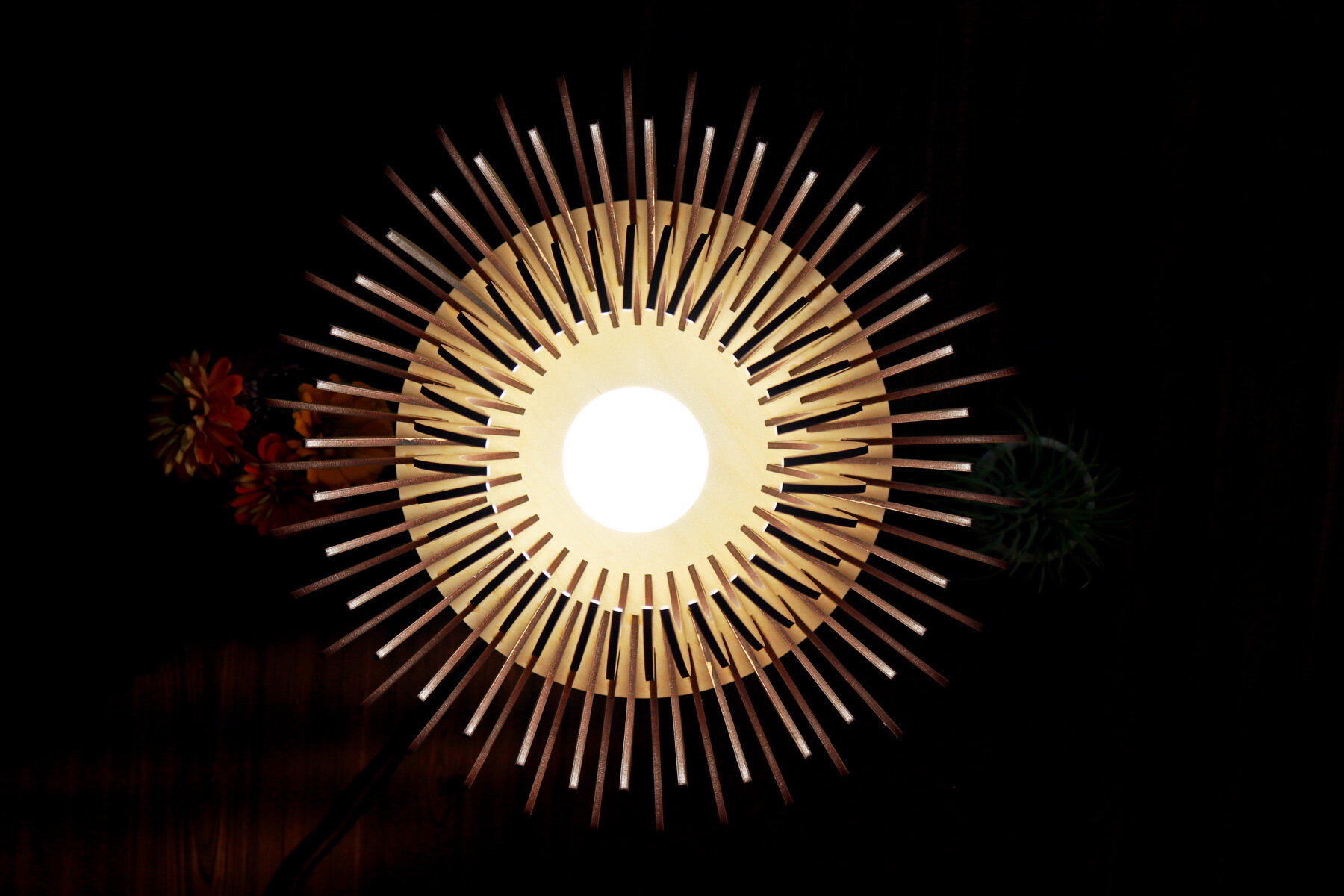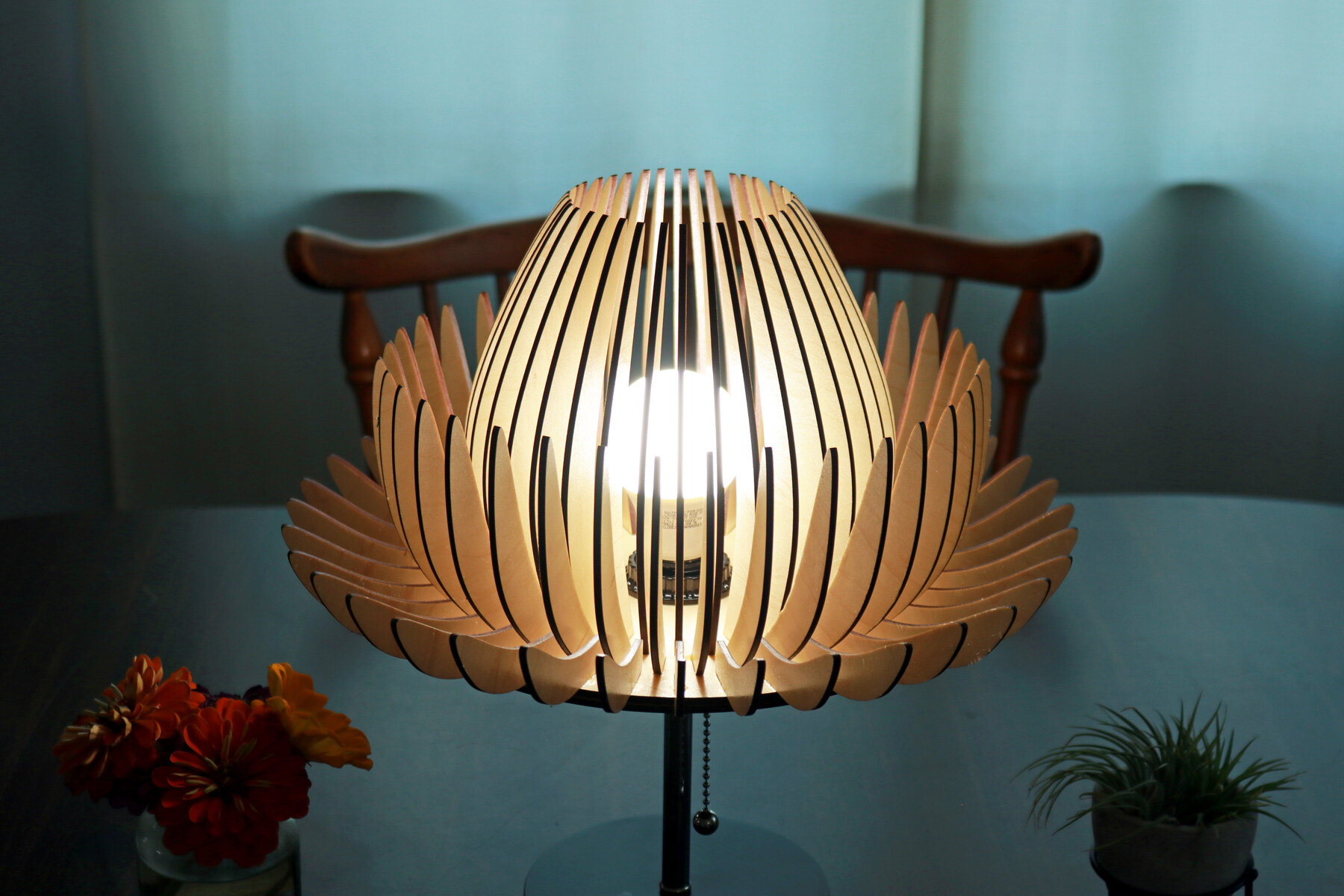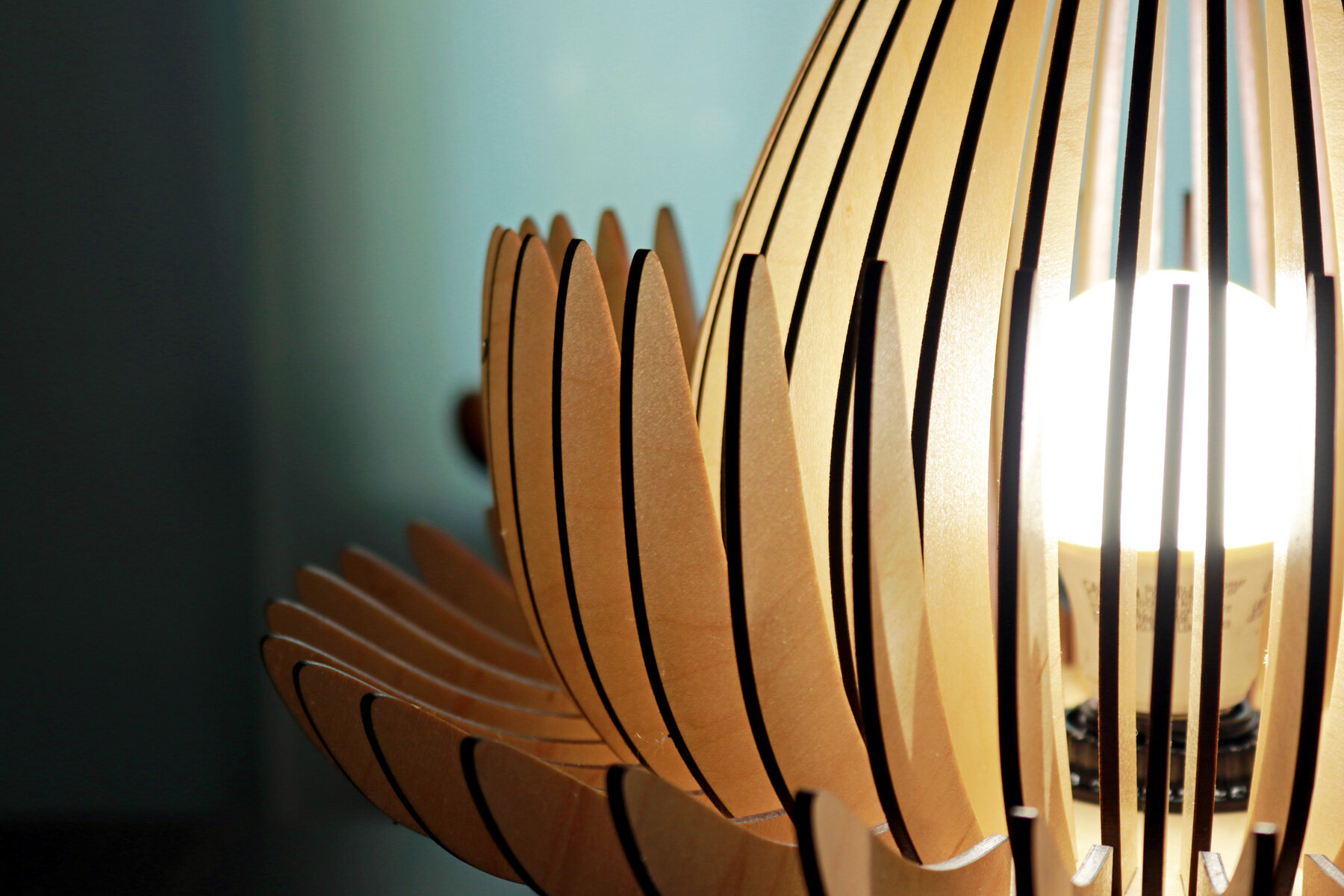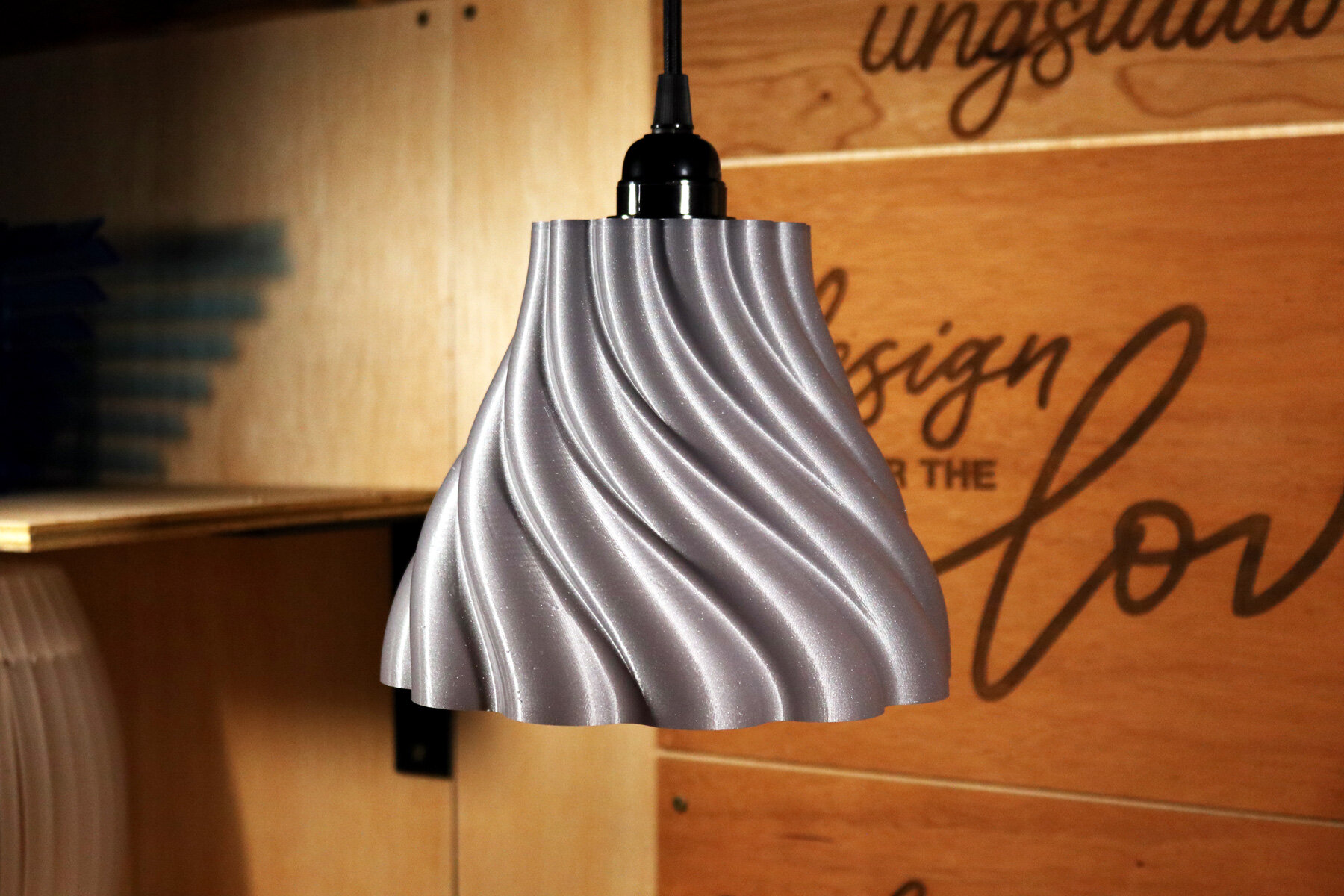Making a Wood Lotus Light
Tools & Materials
Table Lamp - Remove the shade that comes with it
Project Description
How can we create a lampshade based on a lotus flower?
There’s an architecture project called the Lotus Temple that’s based on a lotus flower that a friend suggested through a poll I put out on Instagram. The overall form of the temple was beautifully designed by the architect Fariborz Sahba with curved and folded walls that resemble a closed lotus flower.
As an inspiration for this wood lotus light, I decided to deconstruct the design of the Lotus Temple down to its primary design features – a center flower bud where the exterior panels are coming close together at the top, a middle layer of panels that resemble the blooming of a lotus flower’s petals, and the outer layer that resembles the outermost petals of a lotus flower that are more on a horizontal plane.
The frame of the lampshade will be two circle panels where one has slots cut out for the bottom of each vertical panel to be glued into place and the other panel is solid. There are three different petal designs that range in size and shape. The outermost panels lay horizontally across the circular frame and the inner layers are sloped inward.
Process
The wood lotus light was designed with three different panel types that would be glued into slots cut out of a circular base. Starting with the circular base, there are three layers of slots cut out with the first layer being closer to the center of the circle and the third layer being the furthest out. Each of these layers consist of 36 slots, which will allow the wood panels to slot and be glued in place and each layer is offset to ensure that the panels don’t coincide with one another. In total, there are 108 panels that will be glued into all of the slots.
Each panel type has a unique design. Starting with the first type, which is closer to the light source, the panels are designed to be tall and elegantly curved towards the center. When these panels are glued into their slots in the maple wood base, they create a form that resembles the bud of a lotus flower. The second type, which is the middle layer, is designed at about half the height as the first panel with a pronounced curve that places the top of the piece diagonally away from the center. This second panel type resembles the blooming petals of a lotus flower. The third and outer layer panels are designed to be lower to the circular frame to resemble the outermost leaves of a lotus flower that sits flat on water.
After designing the wood lotus light in Rhinoceros, I efficiently laid the panels and frames on sheets to be laser cut. I loaded the maple plywood sheets into my Glowforge laser cutter and began the process of cutting each piece. Since there are 3 different types of panels in this project, I did my best to cut all of the same pieces on one board so that I could easily separate and organize them.
Once the frames and panels were laser cut, I removed the protective film from their surfaces and organized the 3 different panel types into piles. To start the assembly process, I glued the circular frame with the slots cut out of it onto the solid circular frame. This creates a solid base for the light fixture, but it also allows the gluing process for attaching all of the wood panels to go a lot faster.
When the frames were fully adhered together, I put a glob of wood glue in about 6 slots for the first layer of panels to be glued in place. I took my time aligning the pieces and getting them to be as vertical as possible. This is especially important because once the glue dries, it’ll be hard to go back and correct any that are not correctly positioned. Unlike my other projects, this one doesn’t have another frame positioned higher up on the panels to help position every piece. I repeated this process with the remaining panels and attached six at a time to the wood frame.
















